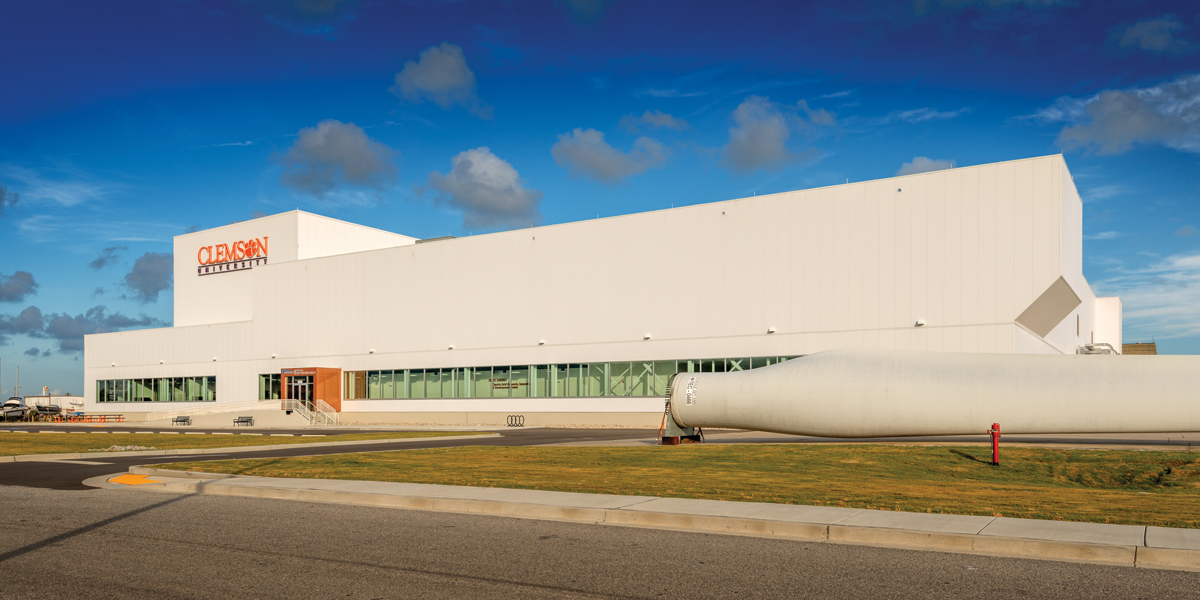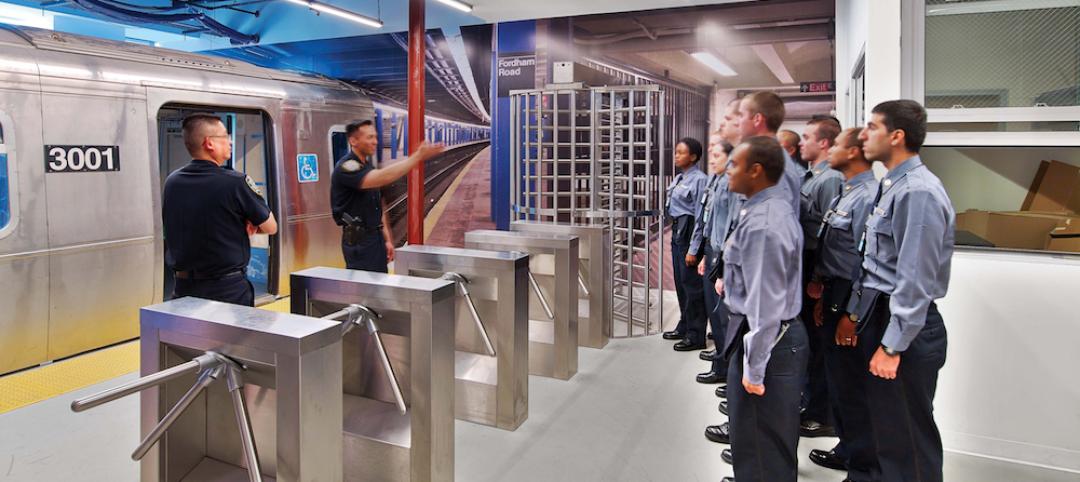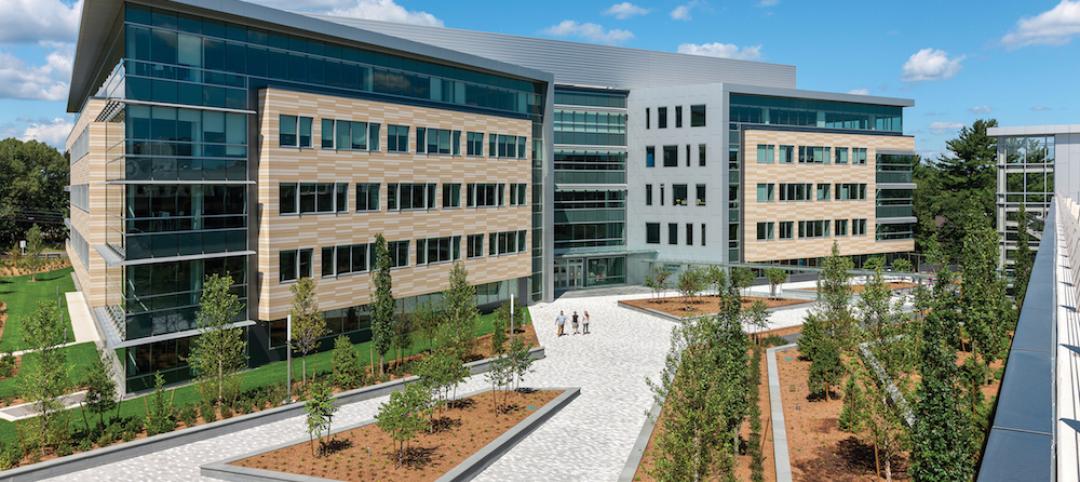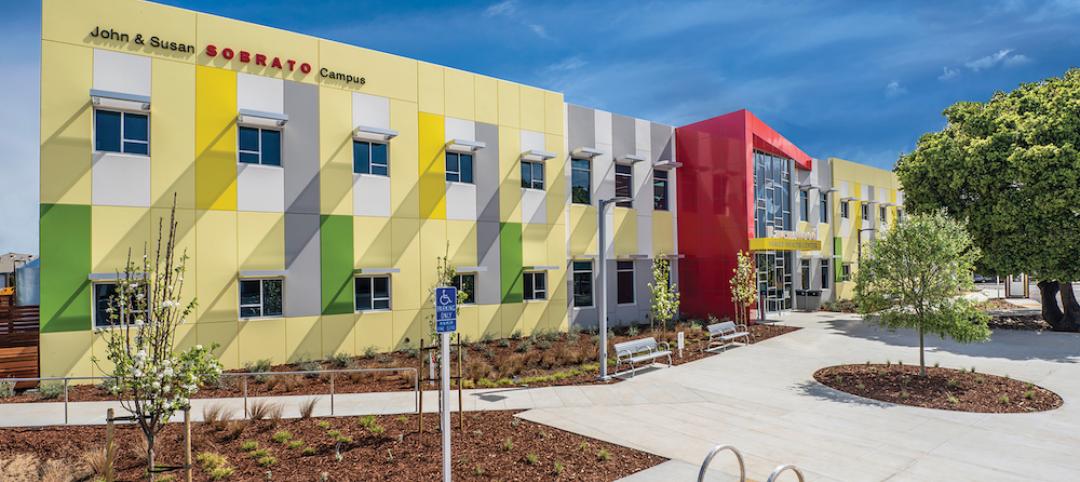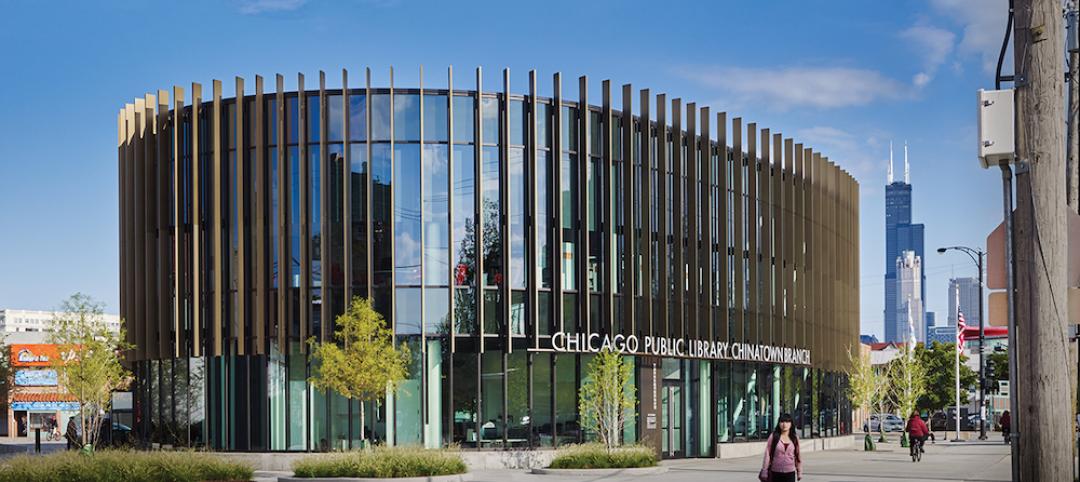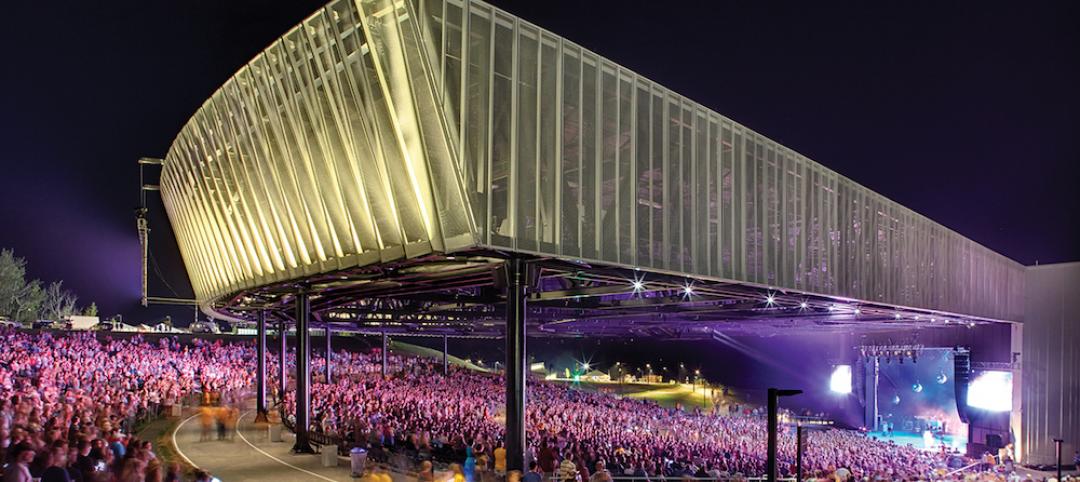The U.S. Energy Department wants wind power to provide at least 20% of the nation’s energy needs by 2030, compared to 3.5% in 2013. Until recently, manufacturers have not been able to replicate on a sufficiently large scale the stress forces that offshore wind turbines must be able to endure.
In 2009, DOE’s Office of Energy Efficiency & Renewable Energy awarded $45 million—its largest single wind-power grant—to Clemson University to build a facility capable of full-scale, highly accelerated testing of the next generation of wind turbine drive-train technology.
The Clemson University Restoration Institute converted a decommissioned Navy warehouse in North Charleston, S.C., into the SCE&G Energy Innovation Center, where such testing is now feasible. The facility also houses Duke Energy’s 15-megawatt eGrid simulator, which tests and validates the impact of electric equipment turbines on the nation’s aging electrical grid.
The project’s sheer magnitude made it a design, engineering, and construction feat. Much of the equipment installed in the facility had never been used before. With design teams and suppliers in the U.S. and Europe, a considerable degree of planning and coordination was required.
PROJECT SUMMARY
GOLD AWARD
Clemson University SCE&G Energy Innovation Center
North Charleston, S.C.BUILDING TEAM
Submitting firm: Choate Construction Co. (GC/CM)
Owner: Clemson University Restoration Institute
Architect/MP engineer: Davis & Floyd
Structural/electrical engineer: AEC EngineeringGENERAL INFORMATION
Project size: 82,264 sf
Construction cost: $37.3 million
Construction period: September 2011 to February 2014
Delivery method: CM at risk
“This project took the meaning of complexity to a whole new level,” says Drew Clark, Senior Project Manager for Clark Construction, a Building Team Awards judge. “When you understand the coordination, logistics, and extreme tolerances—fractions of an inch—required to support the test equipment, you get the sense that they were building something of a Swiss watch, not just a building. Very impressive.”
To meet seismic code requirements, over 900 steel H and concrete piles, ranging in length from 40 to 85 feet and weighing more than 400 pounds, were driven—the equivalent of nine miles of pilings.
The testing equipment included 7.5- and 15-MW hydraulic dynamometers that can replicate the severe rotating and bending forces exerted on the drive trains by 300-foot-long wind turbine blades at sea. Controlling these forces required two testing bays with dynamic independent foundations that could accommodate the massive torque of the testing system, plus the weight of the rigs. A single gearbox weighs 341 tons, or the equivalent of a Boeing 747.
Because the test rigs were so deep and embedded with congested rebar—the 15-MW foundation was 42 feet wide by 100 feet long by 15 feet deep—concrete couldn’t be pumped and vibrated. The Building Team specified self-consolidating concrete with chemical viscosity modifiers that allowed the concrete to flow throughout the rebar and formwork without the need for vibration. The concrete was poured in a single, continuous 12-hour run for each test rig.
There’s over 900 tons of rebar in the test bed foundations, bent to nearly micron levels. The Building Team used BIM modeling to identify 8,500 conflicts in the foundation before construction.
The Building Team also designed an anchor system so turbines could be moved around and repositioned during testing. Four hundred anchor sleeves and 15 assembled arrays were installed; each was measured during fabrication, assembly, setting, and as-built condition.
One anchoring assembly is the 15-MW Load Application Unit (LAU), also known as “Death Star.” The LAU ring, which had to be transported 250 miles in four pieces to the site, required 96 6.5-foot-long tubes. In full field operation, one million pounds of steel components will be cantilevered off of the ring and its surrounding concrete structure.
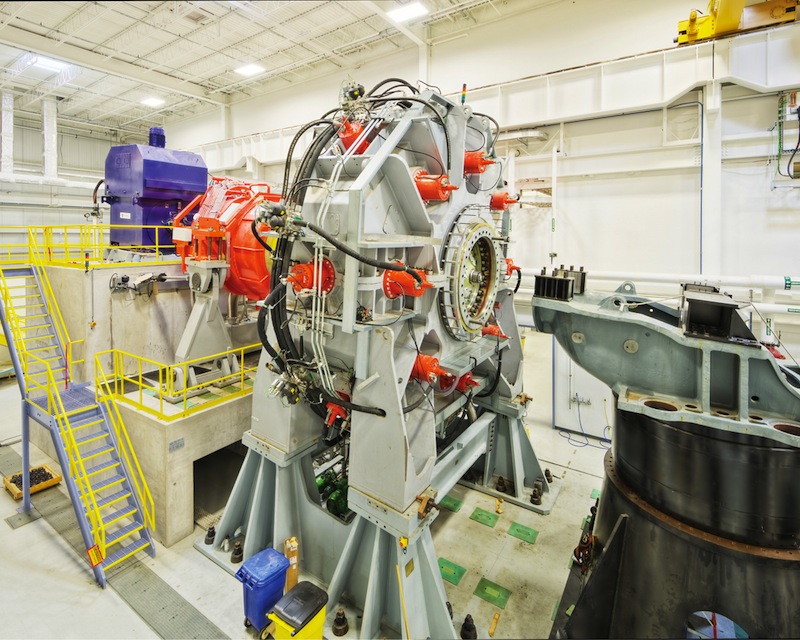 Its dynamometers require 22.5 MW of electricity to operate at full capacity, or enough to power 15,000–25,000 homes per year. The facility recovers about 80% of that energy, resulting in energy cost savings of 60.3% and contributing to the project’s LEED Gold certification. Photo: Ryan Manchester, Clear Sky Images
Its dynamometers require 22.5 MW of electricity to operate at full capacity, or enough to power 15,000–25,000 homes per year. The facility recovers about 80% of that energy, resulting in energy cost savings of 60.3% and contributing to the project’s LEED Gold certification. Photo: Ryan Manchester, Clear Sky Images
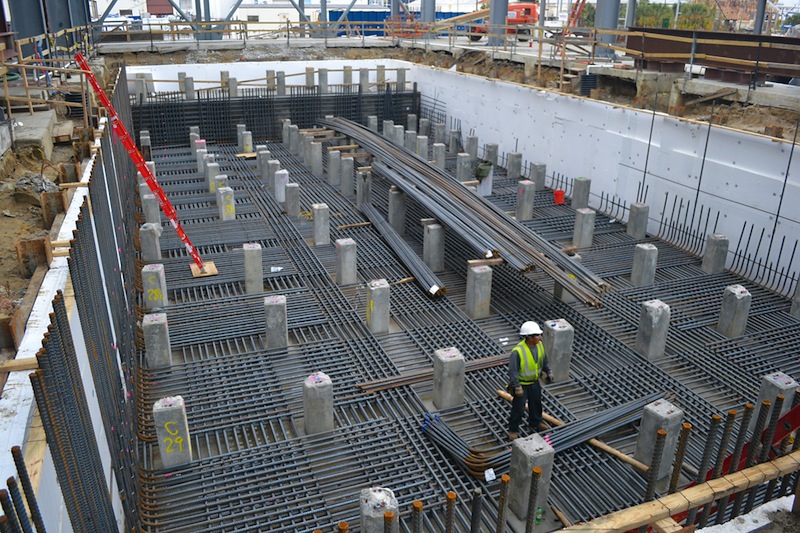 Crews laid down 900 tons of rebar in the test bed foundations. Specialty concrete was poured in a single run to make sure the concrete penetrated the rebar without the use of vibration equipment.
Crews laid down 900 tons of rebar in the test bed foundations. Specialty concrete was poured in a single run to make sure the concrete penetrated the rebar without the use of vibration equipment.
Related Stories
Building Team Awards | May 31, 2016
Gonzaga's new student center is a bustling social hub
Retail mall features, comfortable furniture, and floor-to-ceiling glass add vibrancy to the new John J. Hemmingson Center.
Building Team Awards | May 27, 2016
Big police academy trains thousands of New York's finest
The Police Training Academy in Queens, N.Y., consists of a 480,000-sf academic/administration building and a 240,000-sf physical training facility, linked by an aerial pedestrian bridge.
Building Team Awards | May 26, 2016
Cimpress office complex built during historically brutal Massachusetts winter
Lean construction techniques were used to build 275 Wyman Street during a winter that brought more than 100 inches of snow to suburban Boston.
Building Team Awards | May 25, 2016
New health center campus provides affordable care for thousands of Northern Californians
The 38,000-sf, two-level John & Susan Sobrato Campus in Palo Alto is expected to serve 25,000 patients a year by the end of the decade.
Building Team Awards | May 24, 2016
Los Angeles bus depot squeezes the most from a tight site
The Building Team for the MTA Division 13 Bus Operations and Maintenance Facility fit 12 acres’ worth of programming in a multi-level structure on a 4.8-acre site.
Building Team Awards | May 23, 2016
'Greenest ballpark' proves a winner for St. Paul Saints
Solar arrays, a public art courtyard, and a picnic-friendly “park within a park" make the 7,210-seat CHS Field the first ballpark to meet Minnesota sustainable building standards.
Building Team Awards | May 20, 2016
Pittsburgh's Tower at PNC Plaza raises the bar on high-rise greenness
The Building Team designed the 800,000-sf tower to use 50% less energy than a comparable building. A 1,200-sf mockup allowed the team to test for efficiency, functionality, and potential impact on the building’s occupants.
Building Team Awards | May 19, 2016
Chinatown library unites and serves two emerging Chicago neighborhoods
The 16,000-sf, pebble-shaped Chinatown Branch Library was built at the intersection of new and old Chinatown neighborhoods. The goal is for the building to unite the communities and serve as a catalyst for the developing area.
Building Team Awards | May 19, 2016
NYC subway station lights the way for 300,000 riders a day
Fulton Center, which handles 85% of the riders coming to Lower Manhattan, is like no other station in the city’s vast underground transit web—and that’s a good thing.
Building Team Awards | May 16, 2016
Upstate New York performing arts center revives once-toxic lakefront site
Early coordination, prefabrication, and judicious value engineering contributed to the accelerated completion of the Onondaga Lakeview Ampitheater, a Upstate New York design-build project.


